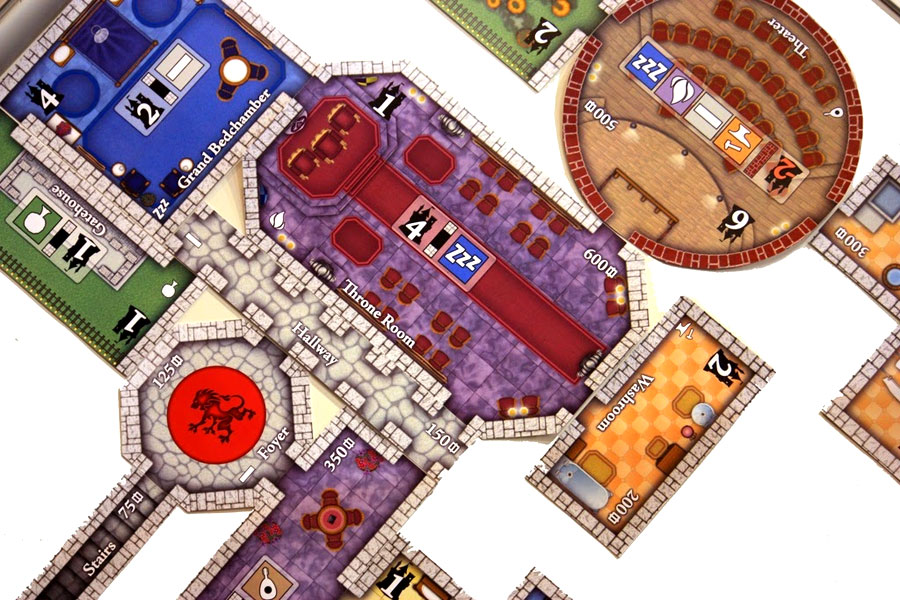GTM #205 - Castles of Mad King Ludwig
Feb 27, 2017
|
Designer Ted Alspach was best known for two very different types of games — Ultimate Werewolf roles and innovative Age of Steam maps — when he surprised the industry with the excellent economic tile-laying game Suburbia. In Castles of Mad King Ludwig, he returns to the idea of players building up a new construction with tiles, but with new ideas of both the way players gain resources and what they do with them. In this Each player's castle begins with a simple foyer — an introductory room with several exits. Each turn, one player (rotating every turn) becomes the "master builder". That player is assigned a random selection of rooms (tiles in various shapes and sizes) that players can add to their castles. The master builder assigns a price to each of these rooms, placing them on the auction board. Each player in turn — with the master builder having the very last chance — has the opportunity to buy one of these rooms and add it to his or her castle, or if nothing appeals, take a sum of free cash or buy an inexpensive and generic "corridor" room. These payments go to the master builder, who thus has an incentive to price them wisely; if the master builder chooses to buy from what's left, that payment goes to the bank. Unbought rooms have a coin added, making them more attractive for future rounds. Why would players prefer to pay more for one room over another? First and most Castles of Mad King Ludwig has two strong appeals. First is the tense and strategic task of choosing prices for rooms. The master builder for the turn has to figure out who is more likely to need what room; then they need to figure out if they should price that room completely out of range, or just high enough that the opponent needs to pay dearly. For example, one of the King's Favor goals might be to get the most outdoor rooms. The master builder might choose to protect their lead by pricing any available outdoor rooms at the maximum price — or just out of range of a rival who's close to the lead. Alternatively, the master builder can choose to array the most desirable rooms at high, but reasonable, prices as a way of earning cash to spend later. The bidders, then, need to make the optimal choice from the offered rooms. It might be better to take a less-helpful room to save money for later, or to buy a point-rich room at all costs.
The second unique appeal is the way the castles look, during construction and after. The rooms vary in size and shape — rectangular, round, or oblong — and the castles naturally form a sprawling, chaotic shape across the table, worthy of the whims of the "Mad" King. Although the symbols are clearly marked on each room, they’re also illustrated in pleasing detail. Bedrooms have beds and chairs, the Pumpkin Garden has pumpkins, and the Mold Room has the green growth of the dungeon. Assembling this crazy collection has a pleasure all its own and makes the game feel like a successful, creative experience even if your building acumen doesn’t ultimately garner the King’s favor.
|

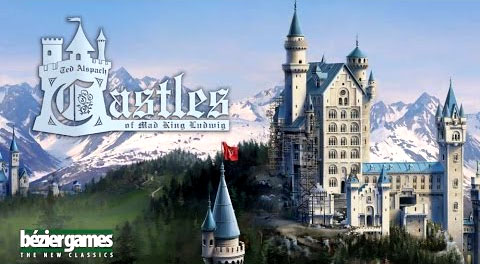
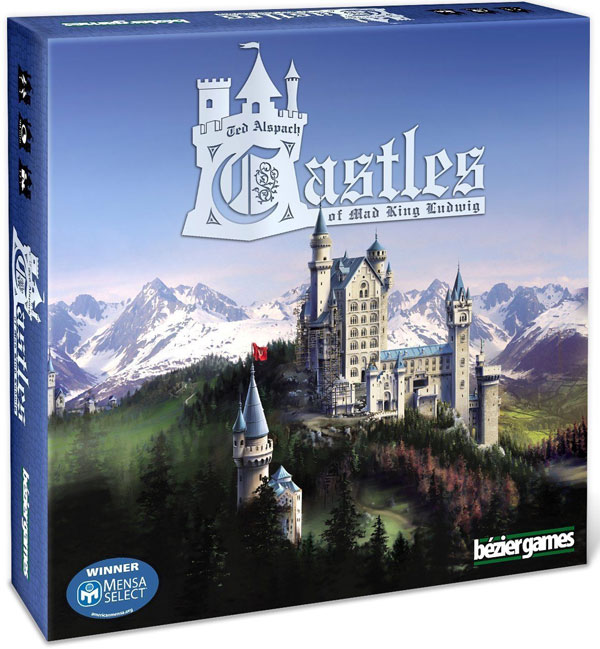 game, players are building contractors, each competing to build a castle to suit the whims of King Ludwig II of Bavaria. This is much less silly than it sounds; Ludwig had three castles built in his lifetime, including the famous Neuschwanstein.
game, players are building contractors, each competing to build a castle to suit the whims of King Ludwig II of Bavaria. This is much less silly than it sounds; Ludwig had three castles built in his lifetime, including the famous Neuschwanstein.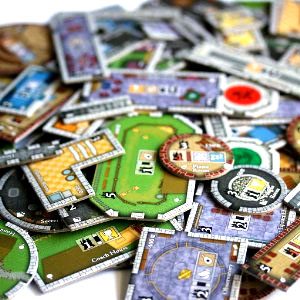 obviously, some are worth more points. But, there are many nuances. First, each room has a type — kitchens, activities, sleeping, etc. — and most give you bonuses or penalties based on what they're next to. For example, many Living Rooms give bonuses for being next to Outdoor Rooms (courtyards, terraces, etc.) while noisy Activity Rooms (gaming halls, feasts, etc.) are worth a lot of points, but give penalties for being next to Sleeping Rooms. Why not just put the rooms far apart? Well, you can, but there’s another bonus for building compact: every room gives another bonus when each of its exits leads to another room. Activity Rooms give another point bonus; Outdoor Rooms grant cash; Utility Rooms grant a bonus card, which gives you a secret goal worth extra points. So, depending on what's already built in your castle, the available rooms might be much more (or less) appealing to you than your rivals. For further thought, each game features a set of common goals — the most square rooms, the
obviously, some are worth more points. But, there are many nuances. First, each room has a type — kitchens, activities, sleeping, etc. — and most give you bonuses or penalties based on what they're next to. For example, many Living Rooms give bonuses for being next to Outdoor Rooms (courtyards, terraces, etc.) while noisy Activity Rooms (gaming halls, feasts, etc.) are worth a lot of points, but give penalties for being next to Sleeping Rooms. Why not just put the rooms far apart? Well, you can, but there’s another bonus for building compact: every room gives another bonus when each of its exits leads to another room. Activity Rooms give another point bonus; Outdoor Rooms grant cash; Utility Rooms grant a bonus card, which gives you a secret goal worth extra points. So, depending on what's already built in your castle, the available rooms might be much more (or less) appealing to you than your rivals. For further thought, each game features a set of common goals — the most square rooms, the 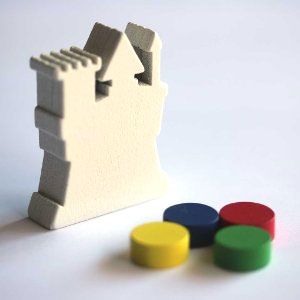 most Sleeping Rooms, the most large rooms, etc. — that reflect the whims of the mad King. Whoever gets the most of these favored rooms receives another bonus; so rooms that are cheap in one game might be highly valued in the next.
most Sleeping Rooms, the most large rooms, etc. — that reflect the whims of the mad King. Whoever gets the most of these favored rooms receives another bonus; so rooms that are cheap in one game might be highly valued in the next.